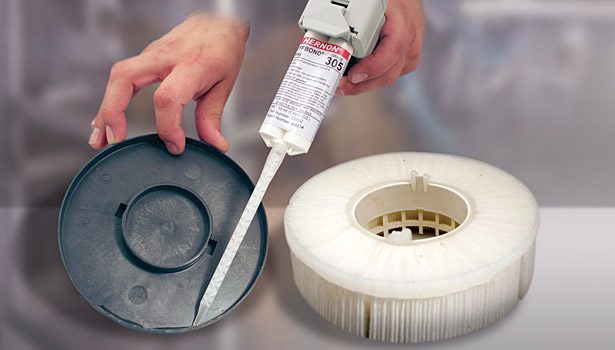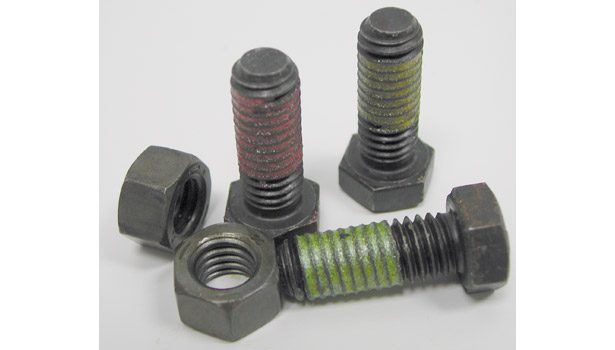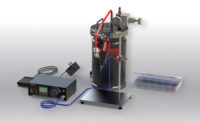Solid Reasons for Solid Systems
Solid-system adhesives offer a variety of benefits for the workplace and the environment.


Consumers and manufacturers alike are discovering the benefits of 100% solid system adhesives.


According to a 2012 market intelligence report, the worldwide solvent market is expected to produce revenues of approximately $33 billion by 2019. Global demand and solvent consumption is also projected to increase at an average annual rate of 2.5% over the next several years. Solvents are big business, but at what price?
The Danger of Solvents
Solvents often contain volatile organic compounds (VOCs), which can be carcinogenic. The VOC emissions released during an adhesive solvent’s formulation, use, and exposure to air while drying and curing can be toxic to humans. Exposure can potentially cause both short- and long-term adverse health effects.
The number of workers being exposed to solvents on a daily basis reaches into the millions. These workers risk multiple health-related dangers, including respiratory impairment; skin inflammation; cancer; and damage to the kidneys, liver, reproductive system and nervous system.
Aside from the human component, adhesive solvents are hazardous to the environment as well. The VOCs found in solvents can enter the atmosphere, contributing to ground-level ozone and global warming. In addition, solvent coatings are not especially efficient with adhesives that require drying. Intensive heat ovens are required for these drying and curing processes, and they are high consumers of energy. These ovens put a strain on the natural resources used to generate this energy.
Adhesives used in packing materials can also contain trace amounts of solvents. Through the use and disposal of these materials, evaporation of these solvents (along with other oils and chemicals) can result in a direct release into the environment, causing air pollution.
Controlling Environmental Issues
To reduce the effect of harmful solvents on human health and the environment, the U.S. Environmental Protection Agency (EPA), in conjunction with state and local governments, has developed hazardous waste recycling regulations. The purpose of these regulations is to ensure that solvents and other toxic, regulated chemicals are handled in a safe and protective way at every step—from the manufacturing process to their use and disposal.
Even with these regulations in place, ground contamination and air pollution can still occur. Accidents happen, and unscrupulous consumers, both in the commercial and non-industrial realm, may disregard proper manufacturing or disposal guidelines. In turn, solvents can contaminate the water supply and pollute the air. It is not uncommon to hear news about the discovery of leaking barrels, a cache of improperly stored chemical drums, or a fire or explosion due to illegal dumping.
This brings to light the third strike against solvents: not only are they toxic and likely to cause environmental contamination, but they are flammable as well. Environmental issues resulting from illegal dumping activity are often compounded by fire and property destruction. Aerosol adhesives, for example, contain propellants like dimethyl ether, butane and propane, which are highly flammable.
Demand for 100% Solids
Through meticulous research and development, the dedication of engineers, programmers, chemists, and chemical engineers, along with substantial investments in technology, adhesive manufacturers are continuously working to eliminate environmental hazards. Collectively, they strive to provide adhesive products that meet or exceed consumer demand while reducing the impact on the earth and increasing the safety of these products to humans. In the case of solvents, the result of this effort by adhesive manufacturers is a 100% solid system technology.
Consumers and manufacturers alike are discovering the benefits of 100% solid system adhesives. Some of these benefits include:
• Eco-friendly characteristics
• Solvent-less
• Fast drying times
• Cost-effective processing
• Eliminated emissions
• Non-toxic
• Eliminated explosion risks
• Non-ozone depleting
• Reduced hazardous waste disposal costs
As one of the most exciting innovations in the adhesive industry in the past few decades, 100% solid systems completely eliminate solvents from the formula. These innovative solid-system adhesives have tremendous environmental advantages over solvent-based adhesives.
Solid-system adhesives create less environmental impact by avoiding the VOCs associated with solvents. Not only do solvent-less adhesive eliminate the outgassing factors, but also the contamination risks—both to the environment and to humans. Solid systems do not contain residue monomers, inhibitors or stabilizers and, as a result, they are more inert and pose less of a risk for skin irritations.
Another advantage of solid systems is that solvent-less adhesives can be applied at, or marginally above, room temperature. In addition, solid-system adhesives are a polar opposite to adhesives containing solvents in terms of drying times. Solid-system adhesives offer fast drying times, without the use of drying ovens, which translates to a minimal amount of energy needed for processing applications.
Solid-system adhesives offer time savings as well. Since the use of large, energy-consuming ovens is eliminateed, parts processed with solid-system adhesives no longer need to be processed in batches. Historically, the typical batch process for solvent-based adhesives involved multiple steps. The adhesive was applied to one batch. Another batch would be in the oven drying, and yet another one would be on racks cooling off. Still another batch that had cooled off would be being packaged for shipping. Instead of a continuous assembly line, the process involved a series of time-consuming stages.
With solvent-less adhesives, however, parts can be processed in a continuous-feed assembly line. No ovens, no batch processing—just fast drying and cost-effective processing. With these faster processing speeds comes a lower cost for manufacturers.
In addition, 100% solid adhesive systems have been engineered without compromising the formula’s characteristics. Chemical engineers have successfully created formulas with all the previously stated benefits without compromising the quality of the adhesives. Solid systems are not only good for the environment, but offer a better product that can come in contact with employees, staff and customers. providing a healthier, more cost-effective solution.
Notable Applications
100% solid systems are appropriate for use in a number of different applications, including UV form on gasket (FOG), diesel exhaust fluid (DEF) pipe sealants, and thermally conductive adhesives.
UV Form on Gasket
UV FOG is an ultraviolet-cure adhesive developed for oil seals. UV FOG replaces inefficient gasketing methods, long drying times and solvent-based products. This product is solvent-free and can be completely cured in seconds without high-energy ovens. Its function is to act as a seal when it is placed in a bore.
UV FOG is very flexible and malleable, while being resistant to many chemicals—including petrochemicals—and will smear to fill any tiny scratches, gaps or dings in the bore. Its solvent-less sealant technology eliminates drying time, reduces energy consumption and enables continuous processing.
Diesel Exhaust Fluid Pipe Sealant
DEF is a urea-based chemical reactant designed to reduce NOx emissions. The EPA is requiring all service, public transport and fleet vehicles to switch over to DEF technology.
DEF pipe sealant formula was developed for use with stainless steel pipes within the petroleum bulk transfer industry. This formula is containment-free to ISO 22241 standards and thereby compatible with diesel exhaust fluid. It is a solvent-less, anaerobic pipe sealant that provides superior mild-locking performance, compared to tapes and non-hardening dopes. DEF pipe sealant reduces costs by eliminating leakage and increasing the assembly line speed. It also prevents environmental contamination issues related to fuel leaking into the ground.
Thermally Conductive Adhesives
Solvent-less, structural acrylics provide specific adhesion for bonding electrical heat sink components with high thermal conductivity, as when bonding LED light base components. Replacing incandescent and standard fluorescent lights, LED lights provide superior illumination and use less energy than older-generation bulbs.
In LED lights, heat that is trapped and not dissipated by the components can lead to premature component failure and costly repair, replacement and increased waste. Trapped heat will also result in an LED light losing 80% of its efficiency. Using a thermally conductive adhesive to bond the base components assures thermal conductivity and prevents electrical shorting. In turn, this maximizes the performance and increases the shelf life of an LED light.
Become a 100 Percenter
To distinguish a product from the competition by using non-solvent adhesives, seek out an adhesive manufacturer that can provide expertly engineered, safe, and affordable 100% solid solutions. This adhesive manufacturer should be not only environmentally conscious, but also cost- and quality-conscious. They should be willing to invest in the company’s infrastructure and equipment, and put in years of research and testing into the formulas to offer high-quality, results-driven, eco-friendly, 100% solid solutions.
For more information, contact Hernon Manufacturing at (866) 554-4005 or (407) 322-4000, or visit www.hernon.com.
Looking for a reprint of this article?
From high-res PDFs to custom plaques, order your copy today!







